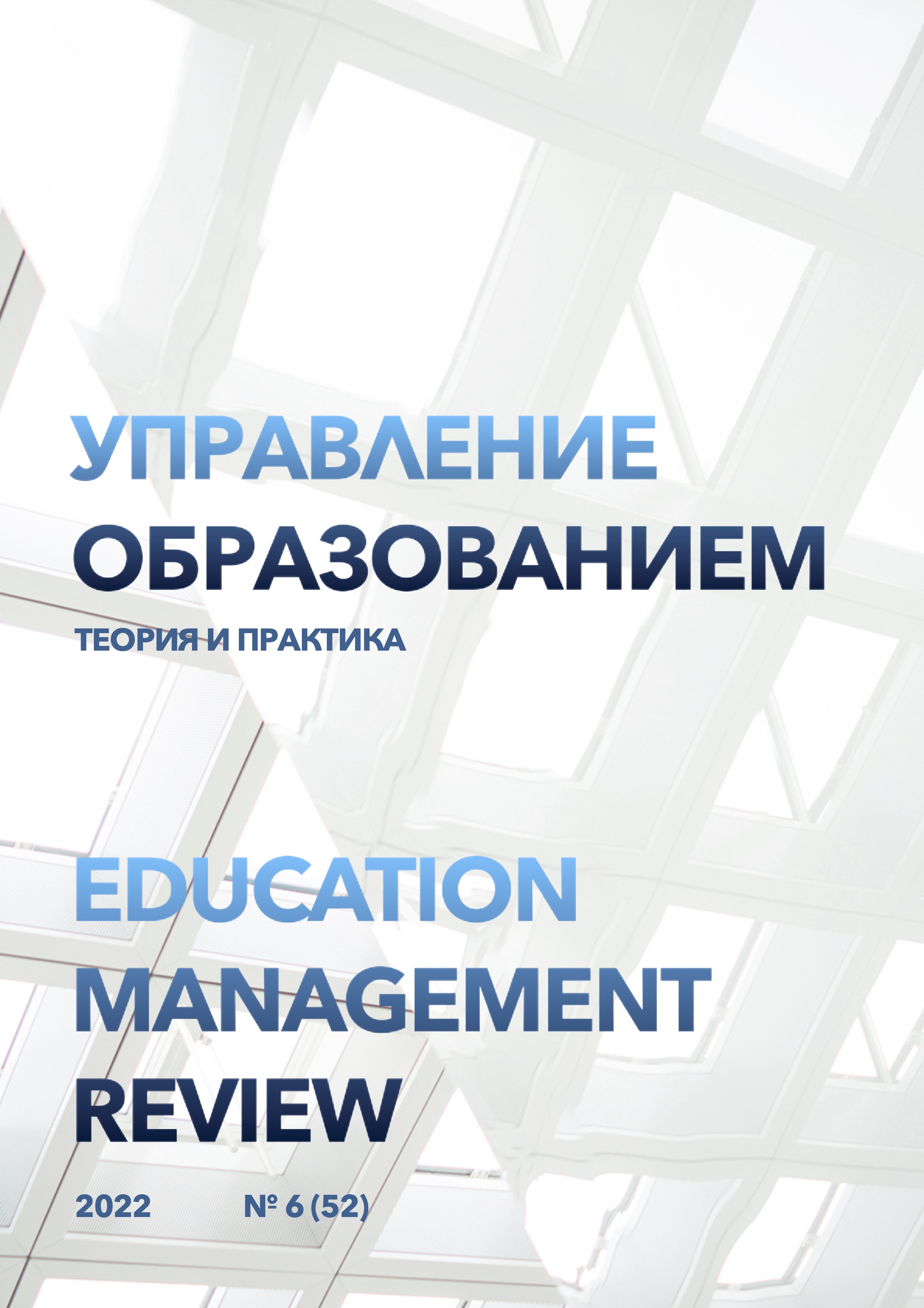Innovative technologies in higher education: development of international cooperation in professional training of specialists
DOI:
https://doi.org/10.25726/o5408-4213-7847-kKeywords:
internationalization, management, education, development, structureAbstract
The use of general scientific methods of analysis, synthesis, comparison and generalization makes it possible to state that the organization of international activities in US public universities differs depending on the size, organizational culture, and main areas of international activity of the university, but most of them have specially created divisions for managing international activities. The models of management of the university's international activities are highlighted. As a result of the application of the method of structural and functional analysis, the substantive and procedural foundations of the international activities of US state universities have been determined. They consist of: special principles (mobility, multiculturalism, diversity and mutual benefit), dimensions (economic, political, academic, cultural), directions (external and internal), types (educational, scientific and innovative, service) and forms of international activity. It is stated that the main forms of international activity of US universities in the context of globalization are partnerships, programs and projects. The work highlights the means of international activities, which are cooperation agreements (intergovernmental, inter-university), grants, programs (government, university, private foundations and business structures). Thus, the application of a systematic approach to the study of the international activities of US state universities made it possible to reveal the features of the management of the international activities of US state universities at the federal and state levels, to determine the organizational and substantive-procedural foundations of the international activities of US state universities at the institutional level.
References
Bulgak, A. A., & Liquan, H. (1996). New Paradigms in International University/Industry/Government Cooperation: Canada–China Collaboration in Advanced Manufacturing Technologies. Industry and Higher Education, 10(5), 285–292. https://doi.org/10.1177/095042229601000504
Chan, W. W. Y. (2004). International Cooperation in Higher Education: Theory and Practice. Journal of Studies in International Education, 8(1), 32–55. https://doi.org/10.1177/1028315303254429
Del Canto Viterale, F. (2018). University as a global actor in the international system of the 21 st Century. Tuning Journal for Higher Education, 6(1), 169–198. https://doi.org/10.18543/tjhe-6(1)-2018pp169-198
Douglass, J. A. (2015). International Berkeley: Past and current debates on the role of international students in an American university. Voprosy Obrazovaniya, 2015(2), 76–108. https://doi.org/10.17323/1814-9545-2015-2-76-108
Fox, P. L., Worley, W. L., Hundley, S. P., & Wilding, K. (2008). Enhancing student learning through international university-industry cooperation: The GO GREEN course. International Journal of Engineering Education, 24(1), 175–184.
Fu, X., & Li, J. (2016). Collaboration with foreign universities for innovation: Evidence from Chinese manufacturing firms. International Journal of Technology Management, 70(2–3), 193–217. https://doi.org/10.1504/IJTM.2016.075162
Johnson, I. M. (1997). Staff development in international technical cooperation programmes: The case of the TEMPUS joint European project “LISTEN.” Information Development, 13(4), 197–202. https://doi.org/10.1177/0266666974238753
Kammas, P., & Philippopoulos, A. (2009). The role of international public goods in tax cooperation. CESifo Economic Studies, 56(2), 278–299. https://doi.org/10.1093/cesifo/ifp025
Keenan, M., Cutler, P., Marks, J., Meylan, R., Smith, C., & Koivisto, E. (2012). Orienting international science cooperation to meet global “grand challenges.” Science and Public Policy, 39(2), 166–177. https://doi.org/10.1093/scipol/scs019
Lipman, L. J., Barnier, V. M., & De Balogh, K. K. (2003). International Cooperation in Veterinary Public Health Curricula Using Web-Based Distance Interactive Education. Journal of Veterinary Medical Education, 30(4), 358–359. https://doi.org/10.3138/jvme.30.4.358
Mawdsley, E. (2014). Human rights and south-south development cooperation: Reflections on the “rising powers” as international development actors. Human Rights Quarterly, 36(3), 630–652. https://doi.org/10.1353/hrq.2014.0044
Mccormick, P. K. (2013). Space debris: Conjunction opportunities and opportunities for international cooperation. Science and Public Policy, 40(6), 801–813. https://doi.org/10.1093/scipol/sct028
Mulhern, J. D., & Ward, M. (1985). Achieving excellence through the international baccalaureate program: A case study of university-school district cooperation. Roeper Review, 7(4), 226–227. https://doi.org/10.1080/02783198509552902
Novikova, E. Y., Mityagina, V. A., & Walter, S. (2019). University international cooperation: Project Based translation training [Межвузовское международное сотрудничество: проектная деятельность в подготовке переводчиков]. Vysshee Obrazovanie v Rossii, 28(6), 75–85. https://doi.org/10.31992/0869-3617-2019-28-6-75-85
Sandell, M. (2015). Learning in and from the West: International students and international women’s organisations in the interwar period. History of Education, 44(1), 5–24. https://doi.org/10.1080/0046760X.2014.953605
Urpelainen, J. (2010). Enforcement and capacity building in international cooperation. International Theory, 2(1), 32–49. https://doi.org/10.1017/S175297190999025X
Urpelainen, J. (2012). How uncertainty about outside options impedes international cooperation. International Theory, 4(1), 133–163. https://doi.org/10.1017/S1752971911000194
Wihlborg, M., Friberg, E. E., Rose, K. M., & Eastham, L. (2018). Facilitating learning through an international virtual collaborative practice: A case study. Nurse Education Today, 61, 3–8. https://doi.org/10.1016/j.nedt.2017.10.007
Williams, S. A. (1992). Human rights safeguards and international cooperation in extradition: Striking the balance. Criminal Law Forum, 3(2), 191–224. https://doi.org/10.1007/BF01096199
Woods, L. T. (1991). Non-governmental organizations and pacific cooperation: Back to the future? Pacific Review, 4(4), 312–321. https://doi.org/10.1080/09512749108718938




